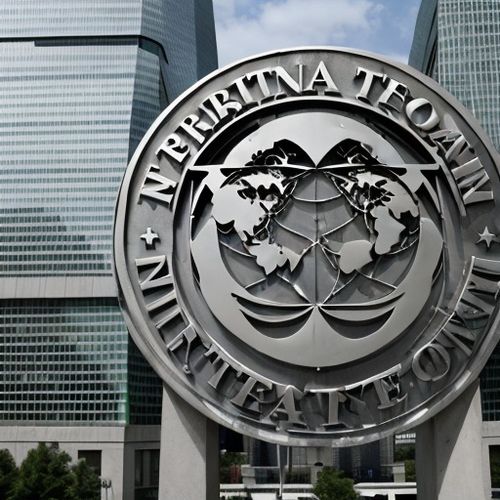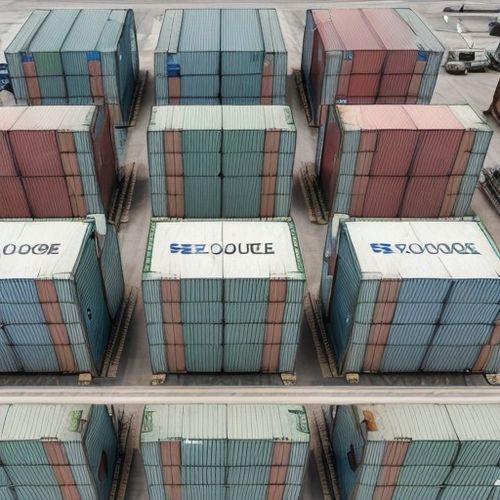Money supply metrics—M0, M1, and M2—are more than abstract numbers on a central bank’s balance sheet. They form the circulatory system of an economy, dictating liquidity, influencing inflation, and signaling shifts in consumer and business behavior. While central banks wield these aggregates as policy tools, their real-world implications ripple through everyday transactions, savings strategies, and corporate investments. From the cash in your wallet (M0) to the savings deposits fueling mortgages (M2), each tier of money supply tells a story about economic health, trust in institutions, and the delicate balance between growth and stability. Understanding these layers is key to decoding everything from hyperinflation crises to stealthy deflationary traps.
M0: The Pulse of Physical Cash
M0, the narrowest measure of money supply, represents physical currency in circulation—coins, banknotes, and central bank reserves. It’s the lifeblood of informal economies and a safety net during crises. In countries like Japan, where cash remains king despite digital advancements, high M0 levels reflect cultural distrust in electronic systems and negative interest rates. Conversely, Sweden’s plummeting M0 underscores its shift toward a cashless society, with fewer than 10% of transactions now using physical money. During shocks like the 2020 pandemic, however, M0 surged globally as households hoarded cash, fearing bank instability or payment disruptions. This “dash to cash” revealed M0’s enduring role as a psychological anchor, even in digitized economies. Central banks closely monitor M0 spikes, as excessive cash hoarding can starve banks of deposits, tighten credit, and amplify recessions.
M1: The Engine of Immediate Liquidity
M1 expands M0 to include demand deposits, checking accounts, and other instantly accessible funds—the money used for daily transactions. Its growth often signals economic optimism, as consumers and businesses keep cash liquid to spend or invest. In the U.S., M1 ballooned during the COVID-19 stimulus era, with checking account balances rising 400% in some demographics. This liquidity glut fueled everything from stock market rallies to supply chain bottlenecks, as flush buyers overwhelmed production capacity. However, M1’s reliability has wavered in the digital age. The rise of instant payment apps and high-yield savings hybrids blurs the line between transactional and savings accounts, complicating measurement. In China, the dominance of mobile platforms like Alipay has created shadow M1 channels outside traditional banking, challenging policymakers to track real liquidity.
M2: The Shadow of Future Inflation
M2, the broadest common measure, envelopes M1 plus savings deposits, money market funds, and small-time deposits—assets that are liquid but not immediately spendable. It’s considered a leading indicator of inflationary pressure, as excess M2 growth suggests money is “sitting idle,” poised to flood markets once confidence returns. Post-2008, quantitative easing saw M2 in major economies balloon without immediate inflation, a phenomenon dubbed the “money velocity paradox.” Yet post-2020, the same dynamics ignited 40-year price surges, proving that timing matters. In emerging markets, M2 trends often expose dollarization risks. For example, in Turkey, despite soaring M2 growth, locals increasingly hoard foreign currency, rendering traditional money supply metrics less predictive of inflation. Meanwhile, Japan’s stagnant M2 growth—despite aggressive monetary easing—highlights how aging populations and risk-averse corporate savings can neutralize stimulus.
The Transmission Mechanism: From Central Banks to Main Street
The journey from central bank policy to real-world impact hinges on how M0-M2 interact. When a central bank injects reserves (M0) via bond purchases, commercial banks theoretically lend these funds, boosting M1 and M2. But post-2008, this mechanism faltered as banks parked reserves instead of lending, creating a liquidity trap. Similarly, negative interest rates in Europe aimed to push M2 into circulation by penalizing savings, yet households responded by saving more, fearing future instability. In developing economies, weak banking infrastructure often breaks the transmission chain. India’s 2016 demonetization abruptly slashed M0, aiming to digitize payments and expand M1/M2. Instead, small businesses reliant on cash faced collapse, revealing how top-down money supply shifts can backfire without grassroots financial inclusion.
Sectoral Impacts: Who Wins and Loses?
Money supply changes redistribute economic power silently. Rising M1/M2 typically benefits asset holders—real estate and stock prices inflate as cheap liquidity seeks returns. This “wealth effect” can mask underlying inequality; in 2021, U.S. household net worth jumped $19 trillion amid M2 expansion, but the bottom 50% captured just 6% of gains. Conversely, M0-centric economies, like Argentina or Nigeria, see inflation disproportionately hit the poor, who lack access to hard currency or stable bank accounts. Sectorally, high M1 growth often lifts consumer discretionary sectors (e.g., retail, travel) first, while surging M2 may later fuel capital-intensive industries (e.g., manufacturing, infrastructure) as savings convert to investments. However, sector distortions emerge when money supply outpaces productivity. China’s post-2008 M2 surge, for instance, built ghost cities and excess industrial capacity, illustrating how misdirected liquidity can create “growth mirages.”
Global Case Studies: Lessons from Extremes
Hyperinflation episodes offer stark lessons in money supply mismanagement. Zimbabwe’s 2008 collapse saw M2 grow quadrillions of percent monthly, as the government printed money to fund deficits. Yet today, Zimbabwe’s dollarization shows how lost trust in local M0/M1 can permanently alter monetary systems. At the opposite extreme, Japan’s “lost decades” demonstrate how expanding M2 alone can’t spur growth without demographic vitality or innovation. The Eurozone’s post-2012 crisis reveals another dimension: cross-border M0 flows. When Greek banks faced runs, ECB-controlled M0 became a political tool, as deposit flight forced capital controls—a reminder that in currency unions, national economies lose control over their money supply levers.
Digital Disruption: Cryptos, CBDCs, and the Future of M
Digital currencies are rewriting money supply rules. Cryptocurrencies like Bitcoin exist outside traditional M categories, creating parallel liquidity pools. Stablecoins pegged to fiat currencies blur M1/M2 boundaries, as they function like digital cash but are backed by reserve assets. Central bank digital currencies (CBDCs) could revolutionize M0 by enabling programmable money—imagine stimulus funds expiring if unspent, forcing M1 velocity. China’s digital yuan trials already show how CBDCs can enhance M0 tracking and reduce shadow banking. Yet risks abound: digital M0 could enable authoritarian surveillance, while decentralized crypto-M2 might evade inflation controls. The rise of “tokenized” real-world assets (e.g., property, art) could further fragment liquidity, challenging regulators to redefine monetary aggregates for the Web3 era.
Navigating the New Normal: Strategies for Stakeholders
For individuals, understanding money supply trends is key to preserving purchasing power. M2 surges may signal impending inflation, nudging allocations toward real assets (property, commodities) or inflation-linked bonds. Conversely, stagnant M2 growth in a low-rate environment—as in the EU—rewards dividend stocks and long-term bonds. Businesses must adapt to financing shifts: when M1 contraction signals tight liquidity, securing credit lines early is crucial. Multinationals in volatile economies hedge by holding hard currency M0 reserves. Policymakers face the tightest rope—expanding M0 to avert crises without unleashing M2-driven inflation, a balance post-pandemic central banks are struggling to strike.
Money supply metrics are the invisible hand’s blueprint, sketching the contours of economic destiny. Yet their power lies not in isolation but in context—how M0’s cash hoards, M1’s transactional energy, and M2’s dormant potential interact with human behavior. In an age of digital upheaval and geopolitical fractures, these aggregates remain indispensable, albeit imperfect, guides. For economists, they are diagnostic tools; for investors, early-warning systems; for the public, a cryptic code deciding job prospects and grocery bills. The challenge ahead is to reinterpret M0-M2 for a world where money is both everywhere and nowhere—digital, decentralized, and relentlessly evolving. By marrying traditional monetary wisdom with emerging realities, we can transform these cold metrics into a compass for inclusive, resilient growth. After all, money supply isn’t just about currency—it’s about trust, and trust, in the end, is the only currency that never inflates.

By Emily Johnson/Apr 24, 2025

By Victoria Gonzalez/Apr 24, 2025

By Michael Brown/Apr 24, 2025

By David Anderson/Apr 24, 2025

By Ryan Martin/Apr 24, 2025

By Victoria Gonzalez/Apr 10, 2025

By David Anderson/Apr 10, 2025

By Noah Bell/Apr 10, 2025

By Michael Brown/Apr 10, 2025

By James Moore/Mar 30, 2025

By Rebecca Stewart/Mar 30, 2025

By George Bailey/Mar 30, 2025

By Noah Bell/Mar 30, 2025

By Samuel Cooper/Mar 30, 2025

By Elizabeth Taylor/Mar 30, 2025